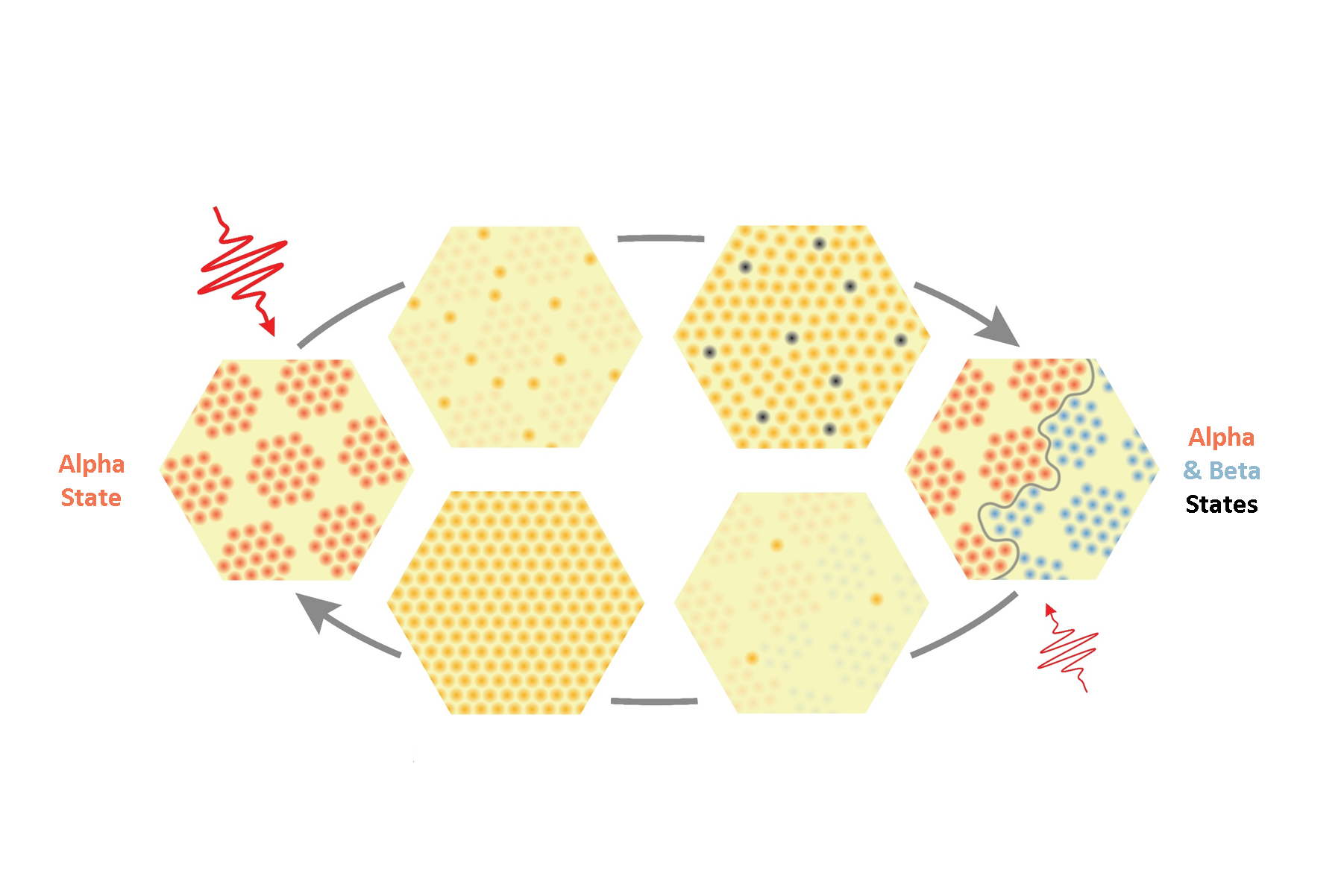Bursts of Light Shape Walls Between Waves of Charge
New method provides ultrafast switching of electronic structure and illuminates fundamentals of charge ordering, potentially offering a simple path for next-generation data storage.

The Science
To better store data, scientists need ways to change a material’s properties suddenly. For example, they want a material that can go from insulator to conductor and back again. Now, they devised a surprisingly simple way of flipping a material from one state into another, and back again, with flashes of light. A single light pulse turns thin sheets of tantalum disulfide from its original (alpha) state into a mixture of alpha and beta states. Domain walls separate the two states. A second pulse of light dissolves the walls, and the material returns to its original state.The Impact
The material’s new properties result from emerging patterns of electrons. Scientists can use these changes in electron charge distributions to build novel computers and more. Today’s computers manipulate the magnetic spin for data storage. This work shows that scientists could use the electron charge density to create pathways for new electronic devices.Summary
Switching the configurations of electrons in a way that changes a material’s properties is key to information storage, processing, and transmission. Scientists have demonstrated new ultrafast laser pulse techniques to change the charge ripples that exist in a material. The ripples, known as charge density waves, result from the quantum interactions of electrons and lattice vibrations. The long-range electron patterning creates “super-lattice” signatures, which can be measured with electron and X-ray scattering. Scientists studied ultrathin tantalum disulfide, which consists of layers of tantalum atoms sandwiched by sulfur atoms. Some of the electron charge normally associated with the locations of the atoms bunches up like peaks and troughs of waves, in positions and angles that are not completely aligned with the atomic structure. These electron density waves have two possible orientations, which the researchers switched using short bursts of laser light. When the light is strong enough, photo-induced defects in the system induce one orientation or the other at different locations. Eventually the oriented regions meet at boundary walls. These walls are expected to have different properties than the bulk material and might, for example, be used to switch the material from an insulator to a conductor at low temperature. To remove these walls, the scientists used a less intense pulse of light to return the material to a single orientation. The researchers plan to investigate the use of photoexcitation to perform ultrafast domain wall engineering and thus control materials properties in a switchable way on extremely short time scales, possibly leading to new quantum level electronic devices.Contact
Nuh Gedik
Massachusetts Institute of Technology
Gedik@mit.edu
Funding
The following organizations supported this study: Department of Energy, Office of Science, Basic Energy Sciences (ultrafast electron diffraction) including support for the Linac Coherent Light Source, an Office of Science user facility; National Science Foundation (selected area diffraction measurements, Massachusetts Institute of Technology); and the Gordon and Betty Moore Foundation (samples, data analysis and manuscript writing).Publications
A. Zong, X. Shen, A. Kogar, L. Ye, C. Marks, D. Chowdhury, T. Rohwer, B. Freelon, S. Weathersby, R. Li, J. Yang, J. Checkelsky, X. Wang, and N. Gedik, “Ultrafast manipulation of mirror domain walls in a charge density wave.” Science Advances 4, eaau5501 (2018). [DOI: 10.1126/sciadv.aau5501]
Related Links
SLAC National Accelerator Laboratory press release: Researchers switch material from one state to another with a single flash of light
Highlight Categories
Performer: University , DOE Laboratory , SC User Facilities , LCLS
Additional: Non-DOE Interagency Collaboration



